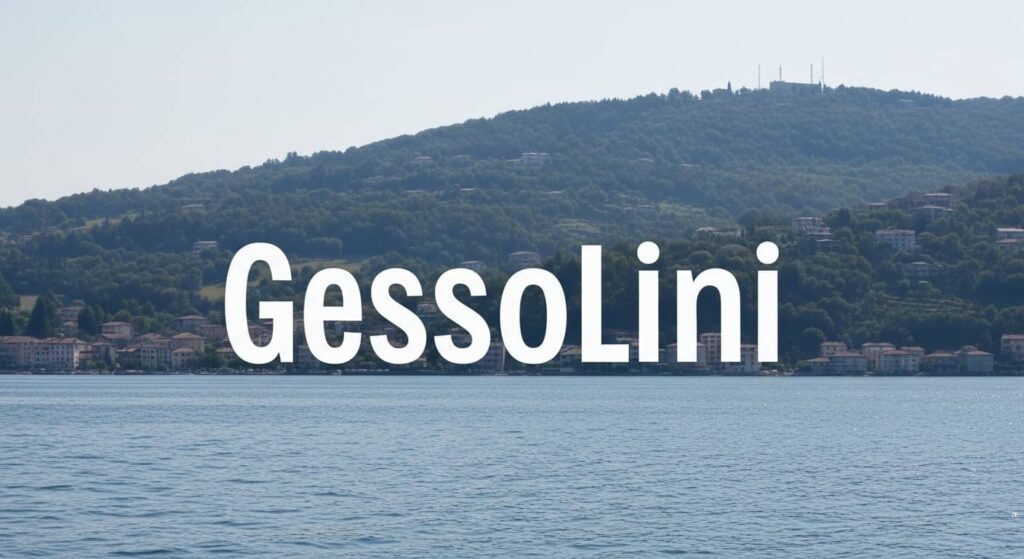Introduction
When you hear the word gessolini, it might sound unusual or even mysterious. Yet, behind this unique term lies a fascinating story of language, heritage, and culture. Like many names and words that travel across borders, gessolini carries layers of meaning shaped by history, identity, and the people who use it.
In this article, we’ll take a deep dive into the origins, symbolism, and importance of gessolini, exploring how it has found a place in both personal and collective narratives.
Understanding the Term Gessolini

At first glance, gessolini may appear as just a surname or a regional term. However, names and words are never “just” labels. They act as cultural bridges, linking people to traditions, family roots, and sometimes entire communities.
Gessolini can be connected to linguistic traditions that trace back to Italy, where surnames often tell stories about geography, ancestry, or personal characteristics. In Italian culture, family names often originated from professions, physical traits, or even the location where a family once lived. For example:
- A person named after their trade (like “Ferrari,” linked to blacksmithing).
- A person named after a place or region.
- A name inspired by natural elements such as rivers, mountains, or flora.
In this sense, gessolini isn’t just a collection of letters but a marker of identity, one that may carry centuries of history.
The Historical Context of Gessolini
To appreciate gessolini, it helps to understand the historical processes that shaped surnames across Europe. Between the Middle Ages and the Renaissance, many families adopted surnames to distinguish themselves as populations grew. Italy, in particular, developed rich naming traditions influenced by Roman heritage, Catholicism, and local dialects.
The suffix “-ini” in Italian often suggests “descendants of” or “belonging to a family line.” That means gessolini might signify a lineage or family group, connecting modern individuals to their forebears.
Interestingly, Italian surnames traveled far beyond their place of origin due to migration. During the 19th and early 20th centuries, millions of Italians emigrated to North America, South America, and other regions, taking names like gessolini with them. Today, surnames of Italian origin can be found in countries as diverse as Argentina, Brazil, Canada, and the United States.
Cultural Significance of Gessolini
Names like gessolini serve multiple purposes in society:
- Identity and Belonging – Carrying a name connects a person to family, culture, and heritage. Someone with the name gessolini can feel tied to traditions that stretch back generations.
- Recognition and Continuity – Names ensure that family legacies endure over centuries. Each time gessolini is passed down, it strengthens the thread of continuity.
- Cultural Pride – For Italian communities abroad, keeping names like gessolini alive is a way of preserving pride in their roots.
In multicultural societies today, surnames act as reminders of the journeys our ancestors took, shaping not just individual stories but also collective histories.
Gessolini in Modern Context
With globalization, names like gessolini continue to evolve. Some people modify spellings to fit new languages, while others proudly maintain the original form. In professional settings, heritage names often spark curiosity, becoming conversation starters and points of connection.
For example, someone named gessolini might frequently be asked about their background, creating an opportunity to share cultural knowledge and family stories. In this way, gessolini acts as both a personal identifier and a cultural ambassador.
Linguistic Insights into Gessolini
The structure of the word gessolini itself reveals much about linguistic traditions:
- “Gesso” in Italian refers to plaster or chalk. Historically, people working with building materials or art might have been associated with this word.
- “-lini” could represent a diminutive or plural form, suggesting “little chalks” or descendants connected to plaster work.
This linguistic clue hints that the original bearers of the gessolini name might have been linked to artistry, craftsmanship, or construction—professions that were highly valued in medieval and Renaissance Italy.
Migration and the Spread of the Name
As Italian families migrated, surnames like gessolini crossed oceans. In Argentina and Brazil, for instance, Italian immigrants created entire neighborhoods where surnames preserved cultural identity. Today, directories in those countries still list Italian-origin names, keeping the past alive.
In the United States, Ellis Island records reveal the arrival of countless Italians whose names were either preserved or altered. Gessolini may have been one of those surnames carried proudly across borders, surviving the challenges of assimilation.
Why Gessolini Matters Today
The importance of gessolini isn’t limited to its past. In a modern world where cultural identity often blurs, names like gessolini remind us of the power of heritage. They symbolize resilience, belonging, and the stories families continue to tell.
Holding on to a name like gessolini means holding on to history. It means recognizing the contributions of ancestors while also shaping a new chapter in contemporary society.
Famous and Notable Connections
Though gessolini may not be a globally famous name like “da Vinci” or “Medici,” its uniqueness is part of its charm. Every family name carries its own heroes—whether they are community leaders, artists, or ordinary people who built lives for their children.
For those researching genealogy, discovering the gessolini name in family records can be a moment of pride. It links a modern individual to centuries of stories, even if not all details are preserved.
Gessolini and Genealogy Research
Family history enthusiasts often find surnames like gessolini an exciting starting point for genealogical research. With digital archives, ship manifests, and parish records now accessible online, tracing the path of the gessolini family tree is easier than ever.
Typical steps in researching include:
- Searching Immigration Records – Finding where the gessolini name first appeared outside Italy.
- Exploring Parish Archives – Baptism and marriage records often hold clues about family roots.
- Connecting with Modern Relatives – Many descendants of Italian migrants maintain networks that preserve the family story.
Through this process, the meaning of gessolini evolves from a simple surname to a rich narrative of resilience and adaptation.
Symbolism of Gessolini in Heritage
Heritage is about more than DNA—it’s about the values, customs, and traditions passed down through generations. The name gessolini symbolizes:
- Strength – Families carrying the name endured migration and societal change.
- Creativity – Its possible ties to art and craftsmanship highlight human innovation.
- Continuity – Gessolini shows how names act as threads binding the past to the present.
This symbolism makes the term not just a word, but a vessel of memory.
Preserving the Name in a Global World
In today’s fast-paced digital era, preserving names like gessolini takes intentional effort. Here are some ways families safeguard heritage:
- Passing the surname through generations without alteration.
- Teaching younger members about the meaning and history behind gessolini.
- Documenting oral histories to ensure stories don’t vanish with time.
- Celebrating cultural festivals where such names take center stage.
By doing so, families ensure that gessolini continues to resonate far into the future.
Modern Representations of Gessolini
Beyond family history, names like gessolini sometimes find their way into art, literature, or even business branding. Companies often use heritage names to signal authenticity and craftsmanship. A boutique named after the gessolini family, for instance, could draw on Italian cultural associations of elegance, artistry, and tradition.
This demonstrates how gessolini can evolve beyond personal use into broader cultural representation.
Gessolini and the Human Story

Ultimately, gessolini is more than a surname. It is a reminder of how humans name themselves, carry those names across lands, and attach stories to them. From Italy’s medieval villages to the immigrant neighborhoods of modern cities, gessolini carries with it the imprint of lives lived, struggles endured, and triumphs celebrated.
Every person who carries the name today is part of that larger human story—a story of movement, belonging, and the enduring power of words.
Conclusion
The story of gessolini is a story of identity, migration, and cultural pride. It reflects how a single name can embody centuries of history, linguistic tradition, and symbolism. While it may not be a household name across the globe, for those who bear it, gessolini is deeply significant.
It connects the present with the past, offering a reminder that behind every name lies a narrative worth exploring. Whether through genealogy, cultural pride, or personal heritage, gessolini continues to inspire curiosity and connection in today’s world.
